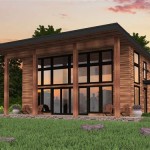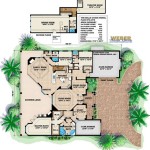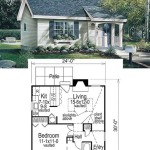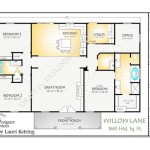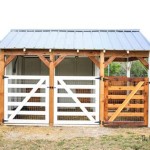Drawing your own house plans refers to the process of creating a detailed visual representation of a proposed residential structure. It involves the generation of blueprints, floor plans, and elevations that serve as a guide for the construction and design of the house.
Whether you are a seasoned architect or a first-time homeowner, drawing your own house plans can be a rewarding endeavor. By undertaking this task, you gain control over every aspect of your home’s design, ensuring that it meets your specific needs and vision.
Before embarking on this journey, it is crucial to approach the task with thorough preparation and proper knowledge. This article will provide a comprehensive guide to drawing your own house plans, including essential considerations, step-by-step instructions, and tips to help you create a successful design.
Drawing your own house plans requires careful consideration of various aspects. Here are 10 important points to keep in mind:
- Define your needs and wants: Determine the number of bedrooms, bathrooms, and other spaces required.
- Research building codes: Ensure your plans comply with local regulations and standards.
- Choose the right software: Select a user-friendly software program that meets your design needs.
- Start with a floor plan: Outline the layout of each floor, including room sizes and placement.
- Add elevations and sections: Create drawings that show the exterior and interior of the house from different angles.
- Consider energy efficiency: Incorporate design elements that promote sustainability and reduce energy consumption.
- Plan for storage and functionality: Design closets, cabinets, and other storage solutions to maximize space utilization.
- Think about the flow of the house: Ensure smooth transitions between rooms and avoid bottlenecks.
- Pay attention to details: Include dimensions, materials, and other specifications for clarity.
- Seek professional advice if needed: Consult with an architect or engineer for complex designs or structural concerns.
By following these points, you can create a comprehensive set of house plans that accurately reflect your vision and meet your functional requirements.
Define your needs and wants: Determine the number of bedrooms, bathrooms, and other spaces required.
The first step in drawing your own house plans is to clearly define your needs and wants. This involves determining the number of bedrooms, bathrooms, and other spaces required to accommodate your lifestyle and preferences. Consider the following factors:
- Current and future household size: How many people will be living in the house now and in the foreseeable future?
- Sleeping arrangements: How many bedrooms do you need, and what sizes should they be?
- Bathroom needs: How many bathrooms are necessary, and what type of fixtures and amenities are desired (e.g., showers, bathtubs, double sinks)?
- Living spaces: What type of living spaces do you need (e.g., living room, family room, dining room)? How large should they be, and how should they flow into each other?
- Other essential spaces: Consider additional spaces such as a kitchen, laundry room, mudroom, office, or playroom.
Once you have a clear understanding of your space requirements, you can begin to sketch out a preliminary floor plan. This will help you visualize the layout of the house and ensure that it meets your needs.
In addition to the number of bedrooms and bathrooms, it is also important to consider the overall size of the house. The size of the house will be determined by the number of people living in it, as well as the amount of space required for the desired amenities and activities.
Once you have defined your needs and wants, you can begin the process of drawing your own house plans. This can be a challenging but rewarding task. By taking the time to carefully plan your house, you can create a home that is perfectly suited to your lifestyle.
Research building codes: Ensure your plans comply with local regulations and standards.
Before you begin drawing your house plans, it is important to research and understand the building codes and regulations that apply to your area. Building codes are laws that govern the construction of buildings, and they are in place to ensure that buildings are safe and habitable. Building codes can vary from one jurisdiction to another, so it is important to check with your local building department to find out what codes apply to your area.
Building codes typically cover a wide range of topics, including:
- Structural requirements: These requirements ensure that buildings are able to withstand the weight of the occupants, furniture, and other loads. They also specify the materials that can be used for structural components, such as framing, walls, and foundations.
- Fire safety: These requirements are designed to prevent and contain fires. They specify the types of materials that can be used for interior finishes, the location of smoke detectors and fire extinguishers, and the installation of fire sprinklers.
- Plumbing: These requirements ensure that the plumbing system is safe and sanitary. They specify the types of materials that can be used for pipes and fixtures, the size of the pipes, and the location of the plumbing fixtures.
- Electrical: These requirements ensure that the electrical system is safe and reliable. They specify the types of materials that can be used for electrical wiring and fixtures, the size of the electrical wires, and the location of the electrical outlets.
By following the building codes, you can help to ensure that your house is safe and habitable. You can also avoid costly delays and fines during the construction process.
In addition to building codes, there may also be other regulations that apply to your property. For example, there may be zoning laws that restrict the types of buildings that can be built in certain areas. There may also be environmental regulations that restrict the use of certain materials or construction methods.
It is important to be aware of all of the regulations that apply to your property before you begin drawing your house plans. By doing so, you can avoid costly mistakes and delays.
Choose the right software: Select a user-friendly software program that meets your design needs.
Choosing the right software for drawing your own house plans is an important decision. There are many different software programs available, each with its own strengths and weaknesses. It is important to select a program that is user-friendly, affordable, and capable of meeting your design needs.
Here are some factors to consider when choosing house plan software:
- Ease of use: The software should be easy to learn and use, even if you have no prior experience with CAD software.
- Features: The software should have all of the features you need to create a complete set of house plans, including the ability to create floor plans, elevations, and sections.
- Compatibility: The software should be compatible with other software programs that you may use, such as word processors and spreadsheets.
- Price: The software should be affordable for your budget.
Once you have considered these factors, you can begin to research different software programs. There are many different ways to do this, such as reading reviews online, talking to other homeowners who have drawn their own house plans, or visiting a local home improvement store.
Once you have found a few software programs that you are interested in, you can download trial versions of the software and try them out for yourself. This is the best way to determine which software program is the right fit for you.
In addition to the factors listed above, there are a few other things to keep in mind when choosing house plan software.
- The type of house you are planning to build: If you are planning to build a simple house, you may not need a software program with all of the bells and whistles. However, if you are planning to build a complex house, you will need a software program that can handle the job.
- Your skill level: If you are a beginner, you will need a software program that is easy to learn and use. However, if you are an experienced CAD user, you may be able to use a more advanced software program.
- Your budget: House plan software can range in price from free to several thousand dollars. It is important to set a budget before you begin shopping for software.
By following these tips, you can choose the right software for drawing your own house plans.
Start with a floor plan: Outline the layout of each floor, including room sizes and placement.
The floor plan is the foundation of your house plans. It shows the layout of each floor, including the location of the rooms, walls, doors, and windows. It is important to create a floor plan that is both functional and. Here are a few things to keep in mind when creating a floor plan:
- Start with the main rooms: Start by drawing the outline of the main rooms in your house, such as the living room, kitchen, dining room, and bedrooms. Once you have the main rooms in place, you can start to add the smaller rooms, such as bathrooms, closets, and hallways.
- Pay attention to the flow of traffic: When creating your floor plan, it is important to consider the flow of traffic. Make sure that there is a clear path from the front door to the main living areas. Avoid creating dead-end hallways or rooms that are difficult to access.
- Consider the size of the rooms: The size of the rooms in your house will depend on your needs and preferences. However, it is important to make sure that the rooms are large enough to be functional. A living room should be large enough to accommodate a couch, chairs, and a coffee table. A bedroom should be large enough to accommodate a bed, dresser, and nightstand.
- Pay attention to the placement of windows and doors: The placement of windows and doors can have a big impact on the look and feel of your house. Make sure that the windows and doors are placed in a way that allows for natural light and ventilation. Avoid placing windows and doors too close to each other, as this can create a cluttered look.
Once you have created a floor plan that you are happy with, you can start to add the details, such as furniture, appliances, and fixtures. You can also start to think about the exterior of your house. The floor plan is the foundation of your house plans, so it is important to take the time to create a plan that is both functional and beautiful.
Add elevations and sections: Create drawings that show the exterior and interior of the house from different angles.
Elevations and sections are two types of drawings that show the exterior and interior of a house from different angles. Elevations are drawings that show the exterior of the house from the front, back, and sides. Sections are drawings that show the interior of the house by cutting through the house at different points.
- Exterior elevations: Exterior elevations show the exterior of the house from the front, back, and sides. They show the overall shape and style of the house, as well as the location of the windows, doors, and other features. Exterior elevations are important for creating a cohesive look for the house and for ensuring that the house is visually appealing from all sides.
- Interior elevations: Interior elevations show the interior of the house from different angles. They can be used to show the layout of the rooms, the location of the furniture, and the overall design of the interior. Interior elevations are important for creating a functional and visually appealing interior space.
- Sections: Sections are drawings that show the interior of the house by cutting through the house at different points. They can be used to show the construction details of the house, such as the framing, the insulation, and the electrical system. Sections are important for ensuring that the house is structurally sound and that it meets all of the building codes.
- Details: Details are drawings that show specific parts of the house in more detail. They can be used to show the construction details of a particular feature, such as a window or a door. Details are important for ensuring that the house is built correctly and that it meets all of the building codes.
Elevations and sections are an important part of house plans. They show the exterior and interior of the house from different angles, and they provide the details necessary to construct the house. By creating accurate and detailed elevations and sections, you can ensure that your house is built to your specifications and that it meets all of the building codes.
Consider energy efficiency: Incorporate design elements that promote sustainability and reduce energy consumption.
In today’s world, it is more important than ever to consider energy efficiency when designing a house. By incorporating sustainable design elements, you can reduce your energy consumption and save money on your utility bills. Here are a few things to keep in mind when designing an energy-efficient house:
1. Orientation: The orientation of your house can have a big impact on its energy efficiency. A house that is oriented to the south will receive more sunlight than a house that is oriented to the north. This can help to reduce your heating costs in the winter. In the summer, you can use awnings or overhangs to shade your windows and keep your house cool.
2. Insulation: Insulation is one of the most important factors in energy efficiency. A well-insulated house will keep the heat in during the winter and the cool air in during the summer. There are many different types of insulation available, so be sure to choose one that is right for your climate and your budget.
3. Windows and doors: Windows and doors are another important source of heat loss. Choose windows and doors that are energy-efficient and that are properly installed. Look for windows and doors with a high R-value. The higher the R-value, the more resistant the window or door is to heat flow.
4. Appliances: When choosing appliances, look for models that are energy-efficient. Energy-efficient appliances use less energy to operate, which can save you money on your utility bills. Look for appliances with the Energy Star label. The Energy Star label indicates that the appliance meets certain energy-efficiency standards.
By incorporating these design elements into your house, you can create a more energy-efficient and sustainable home. This can save you money on your utility bills and help to reduce your impact on the environment.
Plan for storage and functionality: Design closets, cabinets, and other storage solutions to maximize space utilization.
Storage is an essential part of any home. By designing closets, cabinets, and other storage solutions that are both functional and efficient, you can make the most of your space and keep your home organized. Here are a few things to keep in mind when planning for storage:
1. Identify your storage needs: The first step in planning for storage is to identify your needs. What types of items do you need to store? How much space do you need? Once you know your needs, you can start to design storage solutions that meet your specific requirements.
2. Choose the right storage solutions: There are many different types of storage solutions available, so it is important to choose the right ones for your needs. Closets are a great option for storing clothes, shoes, and other items that you need to access on a regular basis. Cabinets are a good choice for storing items that you don’t need to access as often. Shelves are a versatile storage solution that can be used to store a variety of items, from books to dishes to toys.
3. Make use of vertical space: One of the best ways to maximize space utilization is to make use of vertical space. Install shelves and cabinets that reach from the floor to the ceiling. Use stackable bins and baskets to store items vertically. Hang items from the walls or from the backs of doors.
4. Keep it organized: Once you have designed your storage solutions, it is important to keep them organized. Use drawer dividers and shelf liners to keep items in place. Label your storage containers so that you can easily find what you are looking for. Regularly declutter your storage areas to get rid of anything that you don’t need.
By following these tips, you can plan for storage and functionality in your home. This will help you to make the most of your space and keep your home organized.
Think about the flow of the house: Ensure smooth transitions between rooms and avoid bottlenecks.
The flow of a house is important for creating a comfortable and functional living space. When designing your house plans, it is important to think about how people will move through the house and how the different rooms will be used. You want to create a smooth flow between rooms and avoid creating any bottlenecks or dead-end spaces.
- Create a clear path from the entrance to the main living areas: When people enter your house, you want them to be able to easily find their way to the main living areas, such as the living room, dining room, and kitchen. Avoid creating a maze-like layout that makes it difficult for people to navigate.
- Make sure that the rooms are connected in a logical way: The different rooms in your house should be connected in a way that makes sense. For example, the kitchen should be connected to the dining room, and the living room should be connected to the family room. Avoid creating a layout where people have to walk through one room to get to another.
- Avoid creating dead-end spaces: Dead-end spaces are rooms or hallways that do not lead anywhere. They can make a house feel cramped and cluttered. Avoid creating dead-end spaces by connecting all of the rooms in your house in a logical way.
- Pay attention to the size and shape of the rooms: The size and shape of the rooms in your house will affect the flow of traffic. Make sure that the rooms are large enough to accommodate the furniture and activities that will take place in them. Avoid creating rooms that are too small or too large.
By following these tips, you can create a house that has a smooth flow and is easy to navigate. This will make your home more comfortable and enjoyable for everyone who lives in it.
Pay attention to details: Include dimensions, materials, and other specifications for clarity.
When drawing your own house plans, it is important to pay attention to the details. This includes including dimensions, materials, and other specifications for each element of the house. This will help to ensure that your plans are clear and easy to understand, and that your house is built to your exact specifications.
Dimensions: All of the dimensions in your house plans should be accurate and clearly labeled. This includes the dimensions of the rooms, the walls, the windows, the doors, and any other structural elements. By including accurate dimensions, you will help to ensure that your house is built to the correct size and that all of the elements fit together properly.
Materials: You should also specify the materials that will be used for each element of your house. This includes the materials for the walls, the roof, the floors, and the finishes. By specifying the materials, you will help to ensure that your house is built using the materials that you want and that it meets your budget.
Other specifications: In addition to dimensions and materials, you may also want to include other specifications in your house plans. This could include information about the type of foundation, the type of insulation, the type of electrical system, and the type of plumbing system. By including this information, you will help to ensure that your house is built to your exact specifications and that it meets all of the building codes in your area.
By paying attention to the details and including dimensions, materials, and other specifications in your house plans, you can help to ensure that your house is built to your exact specifications and that it meets all of the building codes in your area. This will give you peace of mind knowing that your house is safe and sound, and that it will meet your needs for many years to come.
Seek professional advice if needed: Consult with an architect or engineer for complex designs or structural concerns.
While it is possible to draw your own house plans, there are some cases where it is advisable to seek professional advice. This is especially true for complex designs or if you have any structural concerns. An architect or engineer can help you to ensure that your house plans are safe and sound, and that they meet all of the building codes in your area.
- Complex designs: If you are planning a complex house design, it is advisable to consult with an architect. Architects are trained to design buildings that are both safe and aesthetically pleasing. They can help you to create a design that meets your needs and that fits within your budget.
- Structural concerns: If you have any structural concerns about your house plans, it is important to consult with an engineer. Engineers are trained to design structures that are safe and sound. They can help you to ensure that your house is built to withstand the elements and that it will not collapse.
- Building codes: Building codes are regulations that govern the construction of buildings. These codes are in place to ensure that buildings are safe and habitable. An architect or engineer can help you to ensure that your house plans meet all of the building codes in your area.
- Other considerations: In addition to the above, you may also want to consider consulting with an architect or engineer if you are planning to build a large house, a house on a difficult site, or a house that is environmentally friendly.
By seeking professional advice, you can help to ensure that your house is safe, sound, and built to your exact specifications.










Related Posts


